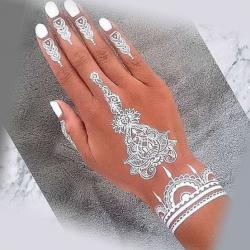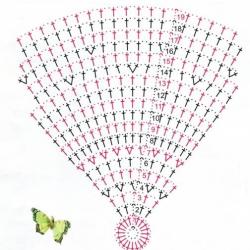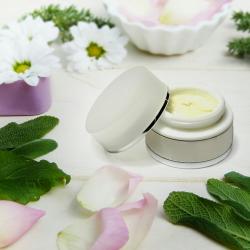Soviet bags and string bags. Avoska: the great history of a simple shopping bag (1 photo) For special occasions
What our time is almost no different from the Soviet era is, probably, the pre-New Year bustle.
Go shopping for gifts and food for the New Year's table.
Only then there were crazy queues, and now there are crazy traffic jams. And the queues too...
Watching people scurrying around mega-markets, entertainment centers and shopping cities with boxes, bright bags and supermarket plastic with products, I suddenly remembered how little I ran to the store, clutching in my hand a string bag or a canvas grocery bag sewn by my mother on a sewing machine ...
After all, think about it - back then it was almost useless to come to the store without a bag. The packages were not sold at the checkout. Everything purchased would have to be carried home in hand. So then everyone carried a net or bag in a briefcase, “diplomat” or handbag..
2. By the way, the history of the origin of the notorious string bag is interesting.
The woven rope bag, which became incredibly popular during Soviet times, was invented in the Czech Republic.
True, at first their inventor Vavrzhin Krcil, who lived in the vicinity of the town of Zdiar na Sazave at the end of the 19th century, produced only hair nets that were then in use.
And when the demand for them began to fall catastrophically, the savvy Vavrzyn attached handles to them - and thus the famous mesh bag was born.
The Russian name for a mesh string bag was invented in the 1930s by the famous satirist Vladimir Polyakov, but this word was made popular by the famous Arkady Raikin, who, during his speeches five years later, delivered a monologue with approximately the following content: “And this is a string bag! Maybe I’ll bring something home in it...”
3. There were different types of string bags. In addition to the traditional mesh, you could also find a similar one - homemade. Of course, it didn’t fit into a jacket pocket, but it was tougher
4. Metal mesh bag. In general, it is worth noting that a Soviet citizen could very often see what his neighbor bought in the store thanks to the different options for “open” bags
5. Another transparent option. By the way, thanks to its rigid design, it was convenient, for example, to carry milk glass containers to the collection point.
6. Fabric bag.
7. And one more option
8. I used this bag to hand over bottles to the glass collection point. It held many more bottles than any other bag
9. Rare plastic bags. They were cherished like the apple of their eye. Over time, from multiple folds, the pattern became more and more blurred, but the bag was still not thrown in. Washed, dried and went to the store again
10. Also a type of container for food. With such a can I went for milk, kvass, and the men went for beer.
11. Photos of people in queues with various bags...
Previous 5 issues in the series:
2. By the way, the history of the origin of the notorious string bag is interesting.
The woven rope bag, which became incredibly popular during Soviet times, was invented in the Czech Republic.
True, at first their inventor Vavrzhin Krcil, who lived in the vicinity of the town of Zdiar na Sazave at the end of the 19th century, produced only hair nets that were then in use.
And when the demand for them began to fall catastrophically, the savvy Vavrzyn attached handles to them - and thus the famous mesh bag was born.
The Russian name for a mesh string bag was invented in the 1930s by the famous satirist Vladimir Polyakov, but this word was made popular by the famous Arkady Raikin, who, during his speeches five years later, delivered a monologue with approximately the following content: “And this is a string bag! Maybe I’ll bring something home in it...”
3. There were different types of string bags. In addition to the traditional mesh, you could also find a similar one - homemade. Of course, it didn’t fit into a jacket pocket, but it was tougher

4. Metal mesh bag. In general, it is worth noting that a Soviet citizen could very often see what his neighbor bought in the store thanks to the different options for “open” bags

5. Another transparent option. By the way, thanks to its rigid design, it was convenient, for example, to carry milk glass containers to the collection point.

6. Fabric bag.

7. And one more option

8. I used this bag to hand over bottles to the glass collection point. It held many more bottles than any other bag

9. Rare plastic bags. They were cherished like the apple of their eye. Over time, from multiple folds, the pattern became more and more blurred, but the bag was still not thrown in. Washed, dried and went to the store again

10. Also a type of container for food. With such a can I went for milk, kvass, and the men - for beer.
What our time is almost no different from the Soviet era is, probably, the pre-New Year bustle.
Go shopping for gifts and food for the New Year's table.
Only then there were crazy queues, and now there are crazy traffic jams. And the queues too...
Watching people scurrying around mega-markets, entertainment centers and shopping cities with boxes, bright bags and supermarket plastic with products, I suddenly remembered how little I ran to the store, clutching in my hand a string bag or a canvas grocery bag sewn by my mother on a sewing machine ...
After all, think about it - back then it was almost useless to come to the store without a bag. The packages were not sold at the checkout. Everything purchased would have to be carried home in hand. So then everyone carried a net or bag in a briefcase, “diplomat” or handbag..
2. By the way, the history of the origin of the notorious string bag is interesting.
The woven rope bag, which became incredibly popular during Soviet times, was invented in the Czech Republic.
True, at first their inventor Vavrzhin Krcil, who lived in the vicinity of the town of Zdiar na Sazave at the end of the 19th century, produced only hair nets that were then in use.
And when the demand for them began to fall catastrophically, the savvy Vavrzyn attached handles to them - and thus the famous mesh bag was born.
The Russian name for a mesh string bag was invented in the 1930s by the famous satirist Vladimir Polyakov, but this word was made popular by the famous Arkady Raikin, who, during his speeches five years later, delivered a monologue with approximately the following content: “And this is a string bag! Maybe I’ll bring something home in it...”
3. There were different types of string bags. In addition to the traditional mesh, you could also find a similar one - homemade. Of course, it didn’t fit into a jacket pocket, but it was tougher
4. Metal mesh bag. In general, it is worth noting that a Soviet citizen could very often see what his neighbor bought in the store thanks to the different options for “open” bags
5. Another transparent option. By the way, thanks to its rigid design, it was convenient, for example, to carry milk glass containers to the collection point.
6. Fabric bag.
7. And one more option
8. I used this bag to hand over bottles to the glass collection point. It held many more bottles than any other bag
9. Rare plastic bags. They were cherished like the apple of their eye. Over time, from multiple folds, the pattern became more and more blurred, but the bag was still not thrown in. Washed, dried and went to the store again
10. Also a type of container for food. With such a can I went for milk, kvass, and the men went for beer.
11. Photos of people in queues with various bags...
Archaeological evidence suggests that our distant Scythian ancestors, who lived in the southern steppes, did not have bags or even pockets. Everything needed on a hike (sword, bow, bowl, knife, flint) was attached directly to the belt.
Bags appeared later, and they were most often made from fur, tanned leather, and only then from fabric. Nomads used leather wineskins, settled tribes used wicker baskets.
In Ancient Rus', pockets attached to the belt of clothing first appeared. For women they were called gourmets and served to carry seeds or candies in them. For men it was Kalita, in which they carried money. They went for mushrooms and berries with birch bark tues or wicker baskets, and went on a long journey with a shoulder bag sewn from a piece of fabric, or with an ordinary bundle. It should be noted that any bags were decorated with ornaments, trimmed with ribbons and embroidery. Wicker baskets also bore the imprint of the master's hand and were often finished around the edges with another type of weaving or brightly painted.
One of the first game bags male hunters began to use it. These bags were made from tanned leather and had a long strap.
Until the beginning of the 20th century. Neither the nobility nor ordinary people had bags as such in Europe. Starting around the 12th century. noble women began to carry small handbags ( wallets), attached directly to the belt or tied to it with a long twisted cord. Such wallets were made of thick fabric or leather, came in various shapes and were richly decorated with embossed patterns, sewing or metal lining. At the French royal court, such a bag was an integral part of the costume and was called “ omonier", and later - " pompadour"in honor of the famous favorite of Louis XV. Coins were often placed in a bag, which jingled as they walked, and during balls and other court receptions, every movement of those present was accompanied by the melodious ringing of coins in their wallets.
In Rus', small purses were decorated with river pearls and beads, and among the reigning persons - with precious stones set in gold and silver. The wives of the Golden Horde khans carried handbags made of brocade at their waists, putting mirrors, powder, and blush in them.
In the Middle Ages, artisans appeared - “bag makers”, engaged in the manufacture of various kinds of wallets, significantly different from each other in price.
Around the 16th century. unusual ones have appeared in Italy clutch bags, made from velvet, silk, plush. Often, muffs were decorated with intertwined cords, beads, bows, and ribbons. Men also wore muffs, but more modest ones.
In addition, wide belts, bodices and skirts with secret pockets were used as improvised bags, and in the 18th century. For convenience, middle class people began to sew large pockets onto their outerwear and aprons. Until the beginning of the 19th century. women wore cross-stitched, knitted or wicker small purses, pompadours and reticules. During Napoleon's time, court fashion continued to include long drawstring handbags. Women of the simple class always had with them beautiful bags for sewing supplies and other small items.
It is interesting that the small handbag-wallet that is familiar to us once had a completely different purpose. Initially, in the 18th century, a purse was a cloth bag, usually a black one, into which the hair tied at the back of the head was stored. And only from the middle of the 19th century. cloth and leather wallets began to be used for carrying money. From a small wallet later came a large shapeless bag-purse.
Peasants all over the world used canvas bags and wicker baskets of various shapes and sizes as bags.
In most countries of the world, merchants used a wide variety of materials to transport goods over long distances due to the lack of leather suitcases and bags at that time. chests. Travel chests were also used by people belonging to other classes, both simple and noble.
In Rus', the most common containers for transporting luggage were headrest chest, on which the merchant (or his assistant) actually slept so as not to be robbed, and a chest with an “alarm”, one of the keyholes of which was equipped with an internal bell (if the thief inserted a master key into it, a ringing sound would be heard). Eastern merchants, in addition to wooden chests, used leather wineskins and fabric bags, which became the prototype of modern traveling bags and trunks.
Beginning of the 20th century was marked by enormous changes in the clothing of European peoples. At this time, women began to wear trousers not only when hunting, but also in everyday life. A huge number of a wide variety of women's bags also appeared: for the theater, for the market, for books, etc. At first, these bags were small, their size began to quickly increase along with fundamental changes in the lifestyle of women. If at the beginning of the 19th century, except for small belt bags and muffs, women in cities no longer carried any bags, then already at the beginning of the next century the picture changed dramatically. Now, every year there were more and more bags, and they were very different in shape, color and purpose.
A kind of women's bag in the 20th century. continued to remain fur muff, in which women could hide money, love messages, and, if necessary, weapons.
Bags were made from leather, suede, crocheted and knitted, woven from beads and straw. At that time, needlework was a mandatory activity for women of different classes. Many of them became simply virtuosos in the manufacture of various handbags and then fashionable pouches.
The appearance and huge variety of bags at the beginning of the twentieth century. was due to the fact that very narrow long skirts with an interception below the knees came into fashion, in which there was no room for secret and obvious pockets. Fashionistas began to purchase large bags with a long strap or chain strap. But they were not always comfortable, and fashion designers developed more and more new types of bags.
Let's look at the origins of different bags and their original purpose.
Briefcase- literally translated from French as “sheet carrier.” Initially, in the middle of the 19th century, it was invented for storing and carrying papers and documents, therefore it has the appropriate shape and several compartments inside. Mostly lawyers, financiers, and sometimes officials carried briefcases. Officers had rectangular leather tablets, students had leather or fabric straps that held a stack of books, and school students wore hard satchels over their shoulders. Briefcases, most often made of black or dark green leather, initially had no handle and were carried under the arm. Craftsmen used smooth or grainy (shagreen) leather to produce briefcases. Less commonly, expensive briefcases were made from saffiano (very soft goatskin) and from genuine crocodile leather or its imitation. The owners of the briefcases decorated them with their monogram made of bronze or more expensive metal. Most often, the briefcase had a lock that was locked with a small key, and the corners of the briefcase were reinforced with metal corners.
Reticule- translated from French as “mesh”. It was often a knitted, and sometimes made of leather, small handbag for visiting a theater or a social reception.
Travel bag— translated from French as “travel bag.” Travel bags were made of leather specifically for travel and were large and roomy.
Close to a travel bag in size and shape trunk- also originally a travel large leather bag, whose homeland is Italy. The dictionary of F. Brockhaus and I. Efron says that a trunk is “a small oblong chest with metal brackets, sometimes upholstered in leather, or a small hand-held leather suitcase.
».
At about the same time as the traveling bag, the case(translated from French as “chest”) - a travel chest with several compartments.
Holdall— the name itself suggests that you need to carry or transport a blanket in this bag. Initially, its purpose was precisely that. Currently, a backpack is a rectangular bag for transporting bedding, the clasp of which opens in such a way that the bag becomes completely open. There are fastening straps inside the backpack. Nowadays, a portmant is a case for suits or just sets of clothes that folds in half. Things in it retain their shape and do not wrinkle.
Backpack- this word has German roots and is translated literally as “backpack”. At first, backpacks were intended for soldiers of the German army, and then they became firmly established in the everyday life of residents of many countries, becoming an integral part of tourists, geologists, archaeologists, children, teenagers, and in recent years, also young mothers.
Travel bag- translated from French as “necessary, necessary.” Travel bags became part of the everyday life of all traveling men and women already in the middle of the 19th century. Initially, they were a spacious box with several compartments, in which men put shaving and washing supplies, and women - washing supplies and handicraft items, which in those days were never parted with. The travel bag turned out to be very convenient for travel and existed until the 21st century, having changed little in essence. It is popular among frequent travelers today and is a small handbag made of easy-to-clean material with several compartments of different sizes.
What kind of bags did history not know during the rapid and full of innovations of the 20th century! These are knitted wallets worn on a long cord, and hard lacquered handbags, and wicker flirty handbags with a bouquet of flowers, and barrel bags, And suitcase bags, and sports bags-ballet shoes, and knitted openwork string bags, and classic leather bags with two handles.
By the middle of the 20th century. Envelope-shaped bags, which appeared back in the 1920s, folder bags, which became fashionable in the 1930s, “car” bags, shaped like modern elongated travel bags, suitcase bags and briefcase bags came into fashion. . For example, ballerina bags, very popular in the second half of the 50s - the first half of the 60s. XX century, had the shape of a small leather suitcase with rounded corners and was fastened with two metal clasps. They were worn by both young girls and older women. Initially, these handbags were intended to store and carry ballroom shoes, without which girls did not go to dances. But since in those days women did not have the opportunity to purchase several different bags, books, cosmetics, and even groceries were carried in ballet shoes. The ballerina handbag has been a symbol of Soviet women for more than a decade.
In the second half of the 20th century. They also began to carry rather large bags, mainly with a long belt. Famous fashion designer Christian Dior made the bags more feminine, elegant, and richly decorated.
In the 1970s multi-colored ones became incredibly popular in the USSR mesh string bags woven from threads. They were worn by both men and women, young and old. Each house had several string bags of different colors.
In the next decade, the first bright plastic bags, which at first could only be purchased on the market for decent money. The bags were attractive with their novelty and beautiful images, but they were very fragile and quickly torn, and, of course, they could not truly replace a woman’s bag.
In the USSR, during the years of perestroika, bags, both made of canvas and made of natural or artificial leather, came into fashion.
Today, bags that are popular are not only beautiful, but also comfortable, which meets the needs of the modern business woman. They are made of leather, fabric, plastic, straw, vinyl, and natural fur. Bags made of calfskin, ponies, cashmere, melange wool, and cotton threads appeared. Designers have developed fashionable oblong baguette bags And belt bags, as well as original extended dachshund handbags.
Designer house Gucci at the beginning of the 21st century. made stylish popular again handbag with bamboo handles, which was in fashion half a century ago.
Throughout its existence, bags have become more interesting and varied every year. The importance of a bag in a woman’s life is evidenced by the fact that in the UK, National Bag Day is celebrated annually on October 4th. On this day, shows of new collections of fashionable bags and accessories take place, and exhibitions and sales are held.
A bag museum has been created in the capital of Japan, which displays more than 3,000 exhibits brought from all over the world. Here you can see bags of all sizes and purposes, from tobacco pouches to handbags. Similar museums are open in Australia and Holland, and in museums of urban life around the world, a variety of bags remain one of the main exhibits.
Some men claim that a woman's bag is almost the same as a garage for them, since it stores the most valuable things she has.
A bag is an almost sacred item for a woman; her choice can depend on the general style of clothing, what place the woman wants to occupy in society, and much more. One of the main requirements for a bag is its correct color scheme that suits the occasion.






